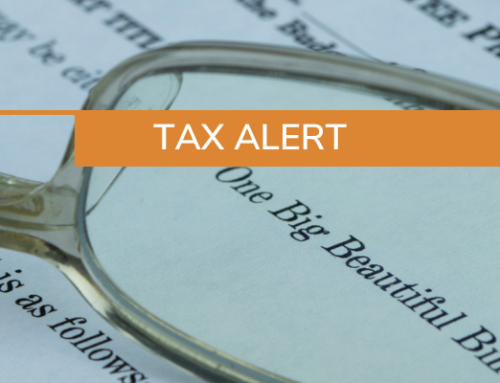IN THIS ARTICLE:
On July 1, 2023, more than 8,000 Virginia employers will receive a notice about RetirePath, a state-sponsored retirement program. The pilot program began earlier in the year and will soon be phased in to eligible employers. Virginia employers that already offer qualified retirement plans can opt out.
Expanding Access to Retirement Savings
44 percent of Virginia’s workforce – more than one million Virginians – does not have access to a retirement savings plan at work. The earlier workers start saving for retirement, the more likely they are to reach their nest egg goals.
Because studies have shown that workers are 20 times more likely to save for retirement when money is automatically deducted from their paychecks, Virginia mandated in April 2021 that private-sector employers offer their employees access to a retirement savings plan. To date, Virginia is one of ten states to pass a state-sponsored retirement plan mandate. The other states include Maryland, California, New York, Oregon, Maine, New Jersey, Illinois, Connecticut and Colorado.
Eligibility and Enrollment
Certain private sector Virginia employers must either register for RetirePath or opt out due to an approved exemption. Eligible employers:
- had 25 or more eligible* employees in 2023,
- have been operating for more than two years, and
- do not already offer a qualified retirement plan, such as a 401(k), 403(b), or Simple IRA.
Eligible employees:
- are at least 18,
- work an average of at least 30 hours per week, and
- receive wages in Virginia.
Self-employed Virginians are also eligible.
After July 1, eligible Virginia employers will have three options:
Option 1: Implement a qualified retirement plan.
Option 2: Register with RetirePath Virginia by February 15, 2024.
Option 3: Pay a fine of $200 per employee per year.
When registering for RetirePath, employers will need their employer identification number (EIN) and RetirePath Access Code. After enrollment, employers must submit payroll records each pay period.
Tax Incentives for Starting a New Retirement Plan
Employers that choose Option 1 unlock significant new federal income tax benefits thanks to the federal SECURE Act 2.0, which passed in December 2022, to include:
The Startup Tax Credit, which allows eligible small employers to claim all or half of qualified startup costs for a new 401(k) plan in the plan’s first three years. Startup costs include administrative expenses and employee education. A business with less than 50 employees can claim 100 percent of startup costs and businesses with 51-100 employees can claim 50 percent. The credit maxes out at $5,000.
This credit is available to employers:
- with less than 100 employees who received at least $5,000 in compensation and wages in the last year,
- that have at least one non-highly compensated employee in the plan, and
- whose employees have not had access to another employer-sponsored plan in the previous three years.
The Employer Contribution Tax Credit, which covers the same eligibility as above and can help to offset employer contributions to new 401(k) plans. Employers with less than 50 employees can claim the credit for up to five years.
And finally, the Auto-Enrollment Tax Credit, which is available for 401(k) plans that offer an automatic enrollment feature. It’s worth $500 for each of the first three years the feature is added, whether that’s on a new plan or an existing one.
Benefits to RetirePath
Offering a qualified retirement plan comes with administrative work and financial costs. Regulatory compliance requirements must be met. Often, these challenges make it difficult for small employers to administer a retirement plan. State-sponsored retirement plans, like RetirePath, provide an easier, more cost-effective alternative.
Employers don’t make any contributions to the retirement accounts. There aren’t any administrative fees or fiduciary responsibilities. RetirePath integrates with most payroll systems, so setup is more streamlined.
In general, offering a way for employees to save for retirement is beneficial. It’s an important talent recruitment and retention tool and contributes to higher employee morale and productivity at work. Turnover tends to be lower, especially for employers that offer vesting schedules for matching contributions.
Communication to Employees
Employees of registering employers will receive information directly from RetirePath. They’ll have the option to:
- participate in the program,
- elect how much to contribute*, and
- whether to recharacterize their contributions to a traditional (tax deductible) IRA.
* up to $6,500 per year ($7,500 if age 50 or older), as long as they earn at least $6,500
Participating employees will generally be making after-tax contributions directly to a Roth IRA from their paycheck, and accessing online financial planning tools. At any time, employees can change their elections, or opt out altogether.
The contributions will be invested in a default investment option, unless the employee chooses a different investment option. The program is designed to be low-cost and portable, meaning that employees can take their retirement savings with them if they change jobs. Self-employed individuals can contribute on their own, too.
Offering employees a way to save for retirement through work is a win-win for all involved. If providing an employer-sponsored plan isn’t feasible, programs like RetirePath provide an effective alternative. As notices start arriving in the mail for RetirePath, employers that need help deciding which option to choose can reach out to their PBMares tax advisor. For more information, contact Tax Service Line Leader, Chris Lemley.





